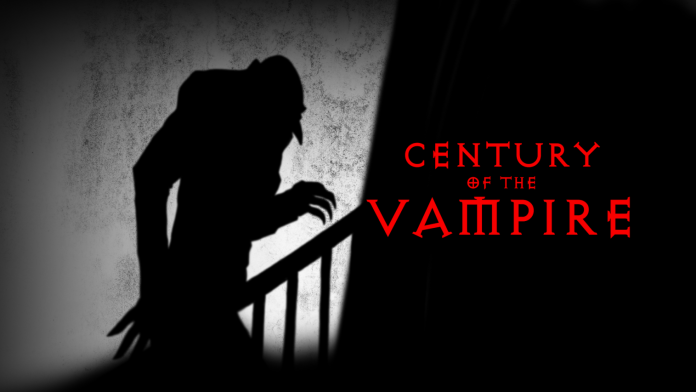Welcome to the Century of the Vampire, an ongoing weekly feature where Goonhammer managing editor Jonathan Bernhardt watches some piece of vampire media, probably a movie but maybe eventually television will get a spot in here too, and talks about it at some length in the context of both its own value as a piece of art and as a representation of the weird undead guys that dominate western pop culture who aren’t (usually) zombies.
Last week, Bernhardt reviewed the 2002 Michael Rymer film Queen of the Damned. Today, Bernhardt looks at the 1994 Neil Jordan film, Interview with the Vampire. This article will contain spoilers.
Finally, one of the fundamental tentpoles of modern vampire cinema, anchored by one of the five most important and influential depictions of a vampire on film with Tom Cruise’s Lestat. This is the reward for sitting through the last month and a half of the bad consequences of this film, culminating in its alleged sequel, Queen of the Damned: The real thing. The big deal. The one that started it all, all over again.
Alright, that’s maybe a bit much. Bram Stoker’s Dracula was released two years prior, and its success was part of what prodded Warner Brothers to pull the script and rights for Interview out of development hell and hand it to Neil Jordan, fresh off The Crying Game (1992). No one had ever stopped making vampire movies, even once stuffy old Dracula himself fell out of fashion with the cultural shifts in Western film in the sixties and seventies — we’ll look at the vampire films of the eighties, eventually, somewhere down the line. But there was relatively little mainstream attention given to a type of genre monster that demanded lots of blood and, at least over in Europe, lots of nudity to hit expectations until the nineties rolled around and a number of different cultural moments collided to give us the vampire’s moment on the stage. Treasure it while it lasts, because zombies are taking over in a decade and change, and good lord is that a step down.
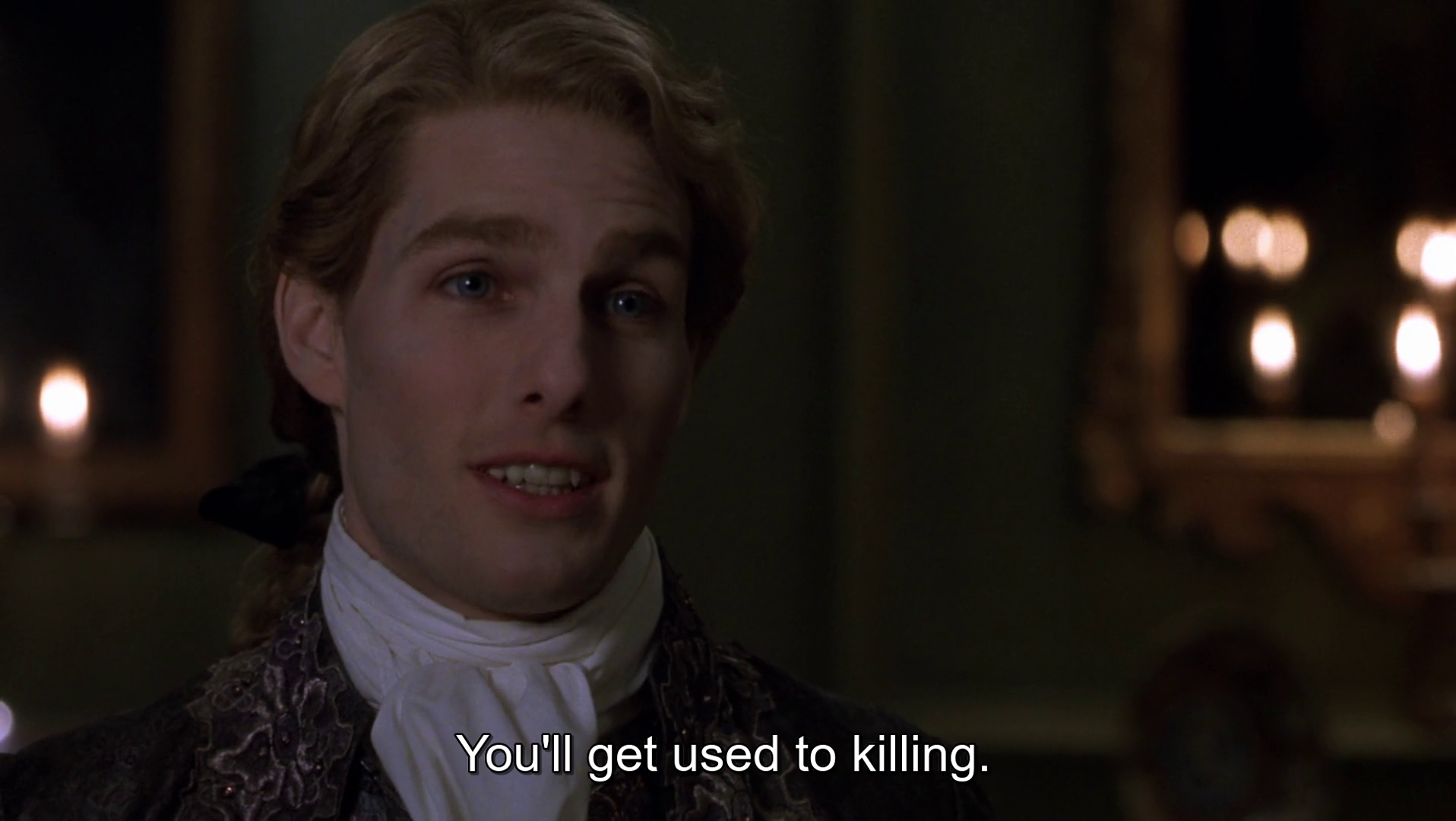
Headlining that moment is Interview with the Vampire, based on the Anne Rice novel of the same name. Rice famously hated Cruise’s casting as Lestat; this was before the days of social media, but you can still recognize the symptoms of being Too Online in her attendance of a fan “boycott” to sign books and agree with them that this clean-cut leading man type who up until then had mostly played soldiers, lawyers, jocks, and basically every type of protagonist that you’d think would be a terrible fit for an unhinged bisexual vampire dandy. Nobody knew that Tom Cruise was a complete psychopath yet, either as an actor or otherwise. Though Ethan Hunt from the Mission: Impossible series has probably surpassed Lestat and every other role of Cruise’s career as the one which defines him (which is itself wild), Interview is the movie to watch if you want a précis on his whole deal as an actor when he’s working at the highest level. The energy, the confidence, the dynamism, the ability to work around or through clunkers on the script page — from mania to languor and back again as the scene demands, and subtle when he needs to be, though Lestat is not a role that demands much subtlety. Lestat is also, somehow, Cruise’s funniest role (I remember laughing at the Tropic Thunder cameo, but it was a cameo, and that’s somehow a far more fraught movie to revisit in 2025 than this one is). Rice recanted her position once she saw the final product, of course, as did anyone else who’d held it.
Much like with Bram Stoker’s Dracula, this movie is anchored by burgeoning stars who became much more famous in the years after its release than they were when it was made; this is of course true of Cruise, Brad Pitt, and Antonio Banderas, who play our three main adult male vampires in Lestat, Louis, and Armand, but eleven-year-old Kirsten Dunst in her first major role as the child vampire daughter-bride Claudia is the biggest standout. I once heard an acquaintance, years ago and as an aside when discussing child actors in general, describe her performance as “so good that it makes the whole deal with her age less uncomfortable,” and at the time I took his word for it, but having seen the film now…no; no, no no. The performance is so good that it highlights the incredibly uncomfortable, unnatural, and taboo thing-that-should-not-be which Claudia represents. The film does the best it can to elide the relationship that develops between Pitt’s Louis and Dunst’s Claudia, especially in the aftermath of their departure from New Orleans, but the exchange between Louis and Armand in his chambers beneath the Parisian vampire theater where Louis says Claudia is his daughter, Armand says she’s Louis’s lover, and Louis then settles on “beloved” sums up the matter in succinct synthesis.
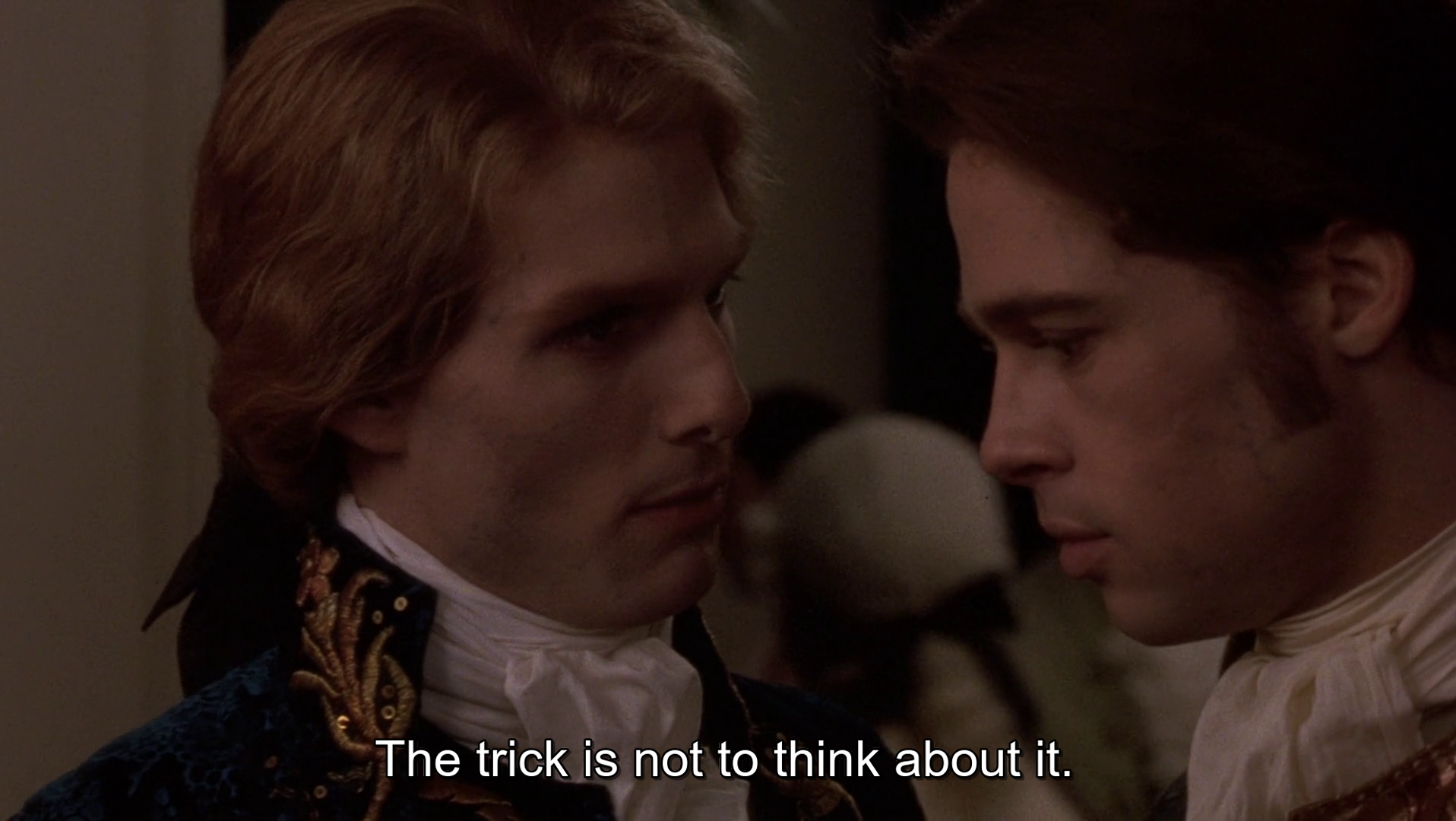
Claudia’s an important character, discomfort and all, because Interview with the Vampire is first and foremost a movie about family that sometimes gets overly distracted by being a movie about vampires; one suspects this is the influence of the extremely Irish Catholic director Jordan, who wrote and shot most of his own script without credit, over Rice, who still retains the official credit on the screenplay. The wandering hedonist mass murderer Lestat, who we are left to believe has come to New Orleans after being too much even for the vampires of Paris to tolerate, turns grieving plantation owner Louis into a vampire after coming across him in a suicidal stupor following the death of his wife and infant in childbirth. Lestat imagines this is the beginning of a new age of great merriment and fellowship for him, teaching his new disciple-son-possibly lover the ways of the vampire as they carve a bloody crest across the city of New Orleans. Lestat is astoundingly prolific in his appetites, going through two to three victims a night, with the impression given that he is feeding either every night or most nights of the week, but there do not seem to be vampire hunters in this version of 1791 New Orleans and he predominantly attacks sex workers, most of them Black, so it is perhaps uncomfortably realistic that none have sprung up since he arrived in town. Louis, however, is horrified by this whole state of affairs once he’s up to speed on what he is now and what he’s expected to do. The grand argument begins between the two of them, with Lestat demanding Louis embrace vampirism and specifically the killing of humans when he feeds on their blood, and Louis insisting there must be another path for vampires to walk. Sometimes Lestat argues that vampires are a divine punishment sent by God on man; sometimes he argues they are natural beasts of the highest order. It doesn’t really matter and he doesn’t really care, because the intellectual matter doesn’t concern him — he just wants to say the right words that will convince Louis to chill out and party down.
The intellectual matter does, however, concern Louis a great deal. He goes through a full crisis of faith, burning his plantation to the ground, freeing his slaves (this thankfully happens early in the film; the depiction of the plantation and the enslaved people who live on it is handled well for 1992, perhaps, but would not fly today), feeding on the unsuitable blood of animals until it makes him sick, refusing the blood of a sex worker in a particularly maniacal temptation by Lestat that has him flipping between his facile suave seduction with the bleeding, dying woman and a childish temper tantrum at Louis, and eventually running out into the rain, into the plague quarter, and finally giving in to his hunger and fatally feeding on a doomed, infected young girl who has lost her mother to disease.
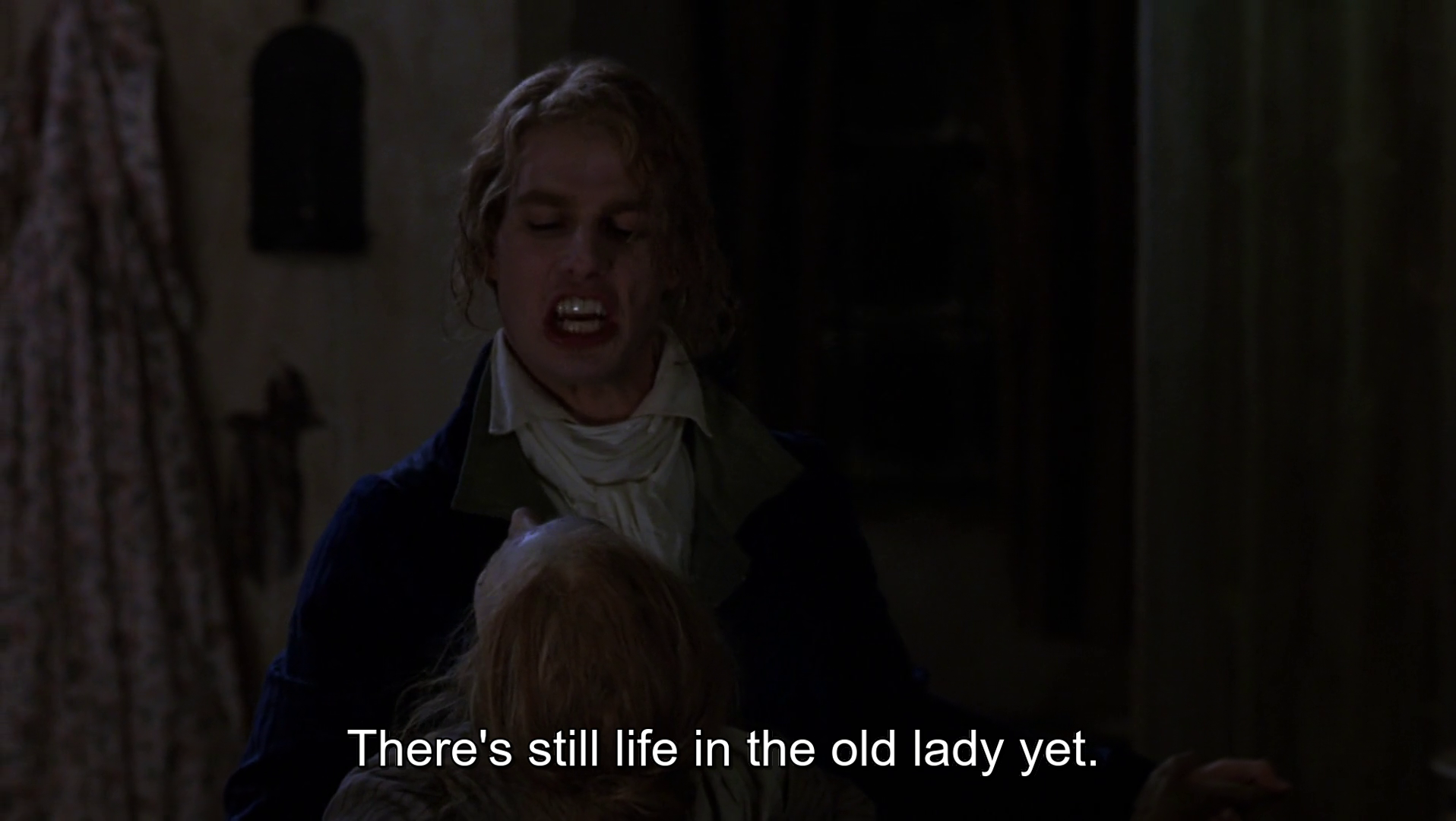
Lestat bursts in, ecstatic. He’s won! He dances about the room with the mother’s corpse, swinging her to and fro in an underrated career highlight for Cruise. Louis is even more ashamed of himself now, at his lowest point, and caught up in the throes of celebration Lestat makes an impulsive, fateful decision: He turns the dying little girl, Claudia, into a vampire, so that they can all be a family.
They are, for a time. Lestat gets some thirty years of what he wants, with the two vampire dads and their daughter terrorizing New Orleans, laying waste to entire families in their hunger, the influx of immigrants to the New World covering up their crimes. Then things crash down when the forty-year-old mind in the eleven-year-old body comes to terms with the fact that she doesn’t want to play with dolls or take piano lessons anymore; she wants to be a grown-up. And this time, Lestat doesn’t win the ensuing argument over the nature of vampires, and his attempts to do so go too far. This time, Claudia poisons two children with laudanum, gives them to Lestat as a peace offering, and when the drugged blood paralyzes him, cuts his throat and bleeds him dry on the floor in front of Louis. And then, morons that they are, instead of burning or burying his body, they throw it in the swamp.
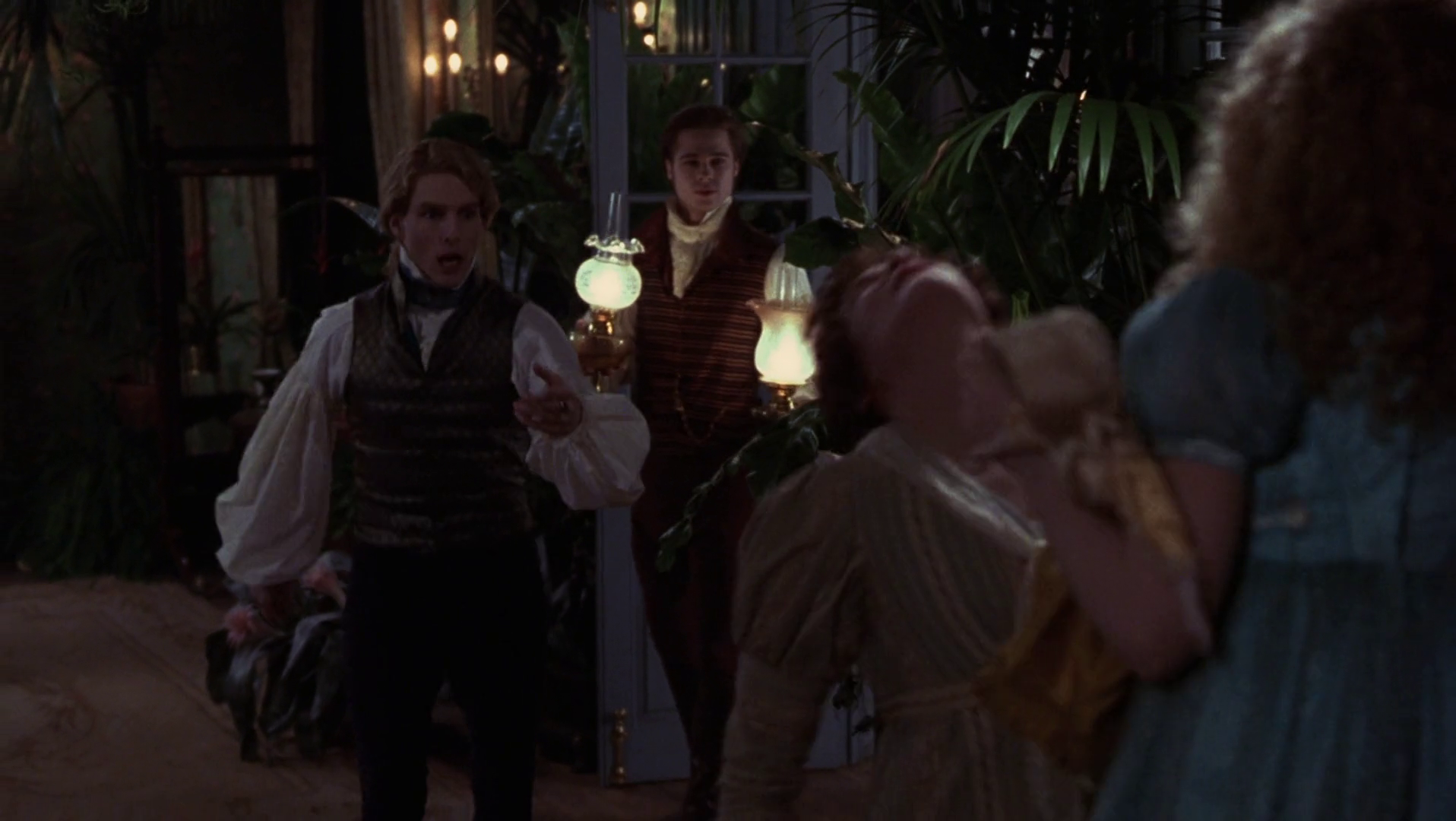
Interview with the Vampire has about a two-hour run time, and excluding the framing device of the interview itself at the front and the back of the film, spends its time on two distinct stories: the rise and fall of the New Orleans vampires, and the destruction of the Parisian vampires at the hands of Louis. The former is anchored by Louis and Lestat; the latter by Louis and Armand, Banderas’s ancient Spanish elder vampire who seeks to replace Lestat in Louis’s unlife. The Lestat story is by far the stronger of the two, though the second story has its moments; Cruise is simply more compelling than Banderas, and has much more to do.
In brief: Following their murder of Lestat — he comes back from the swamp, of course, and this time they set him and the entire French Quarter on fire on their way out of town — Claudia and Louis flee for Europe and spend years traveling the Old World, looking for more of their kind. They’re unable to find any, and settle in Paris into a new night-time life of hedonism and feeding. Eventually Armand and Santiago (Stephen Rea) approach Louis and tell him to swing by the Vampire Theater, which has business cards and everything, and to be sure to bring “the petite beauty” with him. Sure. So they attend the next night and it appears this place called the Vampire Theater, where vampires playing actors playing vampires strip, kill, and eat a young woman onstage at the end of every show, never merited a look from Louis and Claudia during all their time scouring the continent for others of their kind. After the curtain falls, they go backstage to meet the cast.
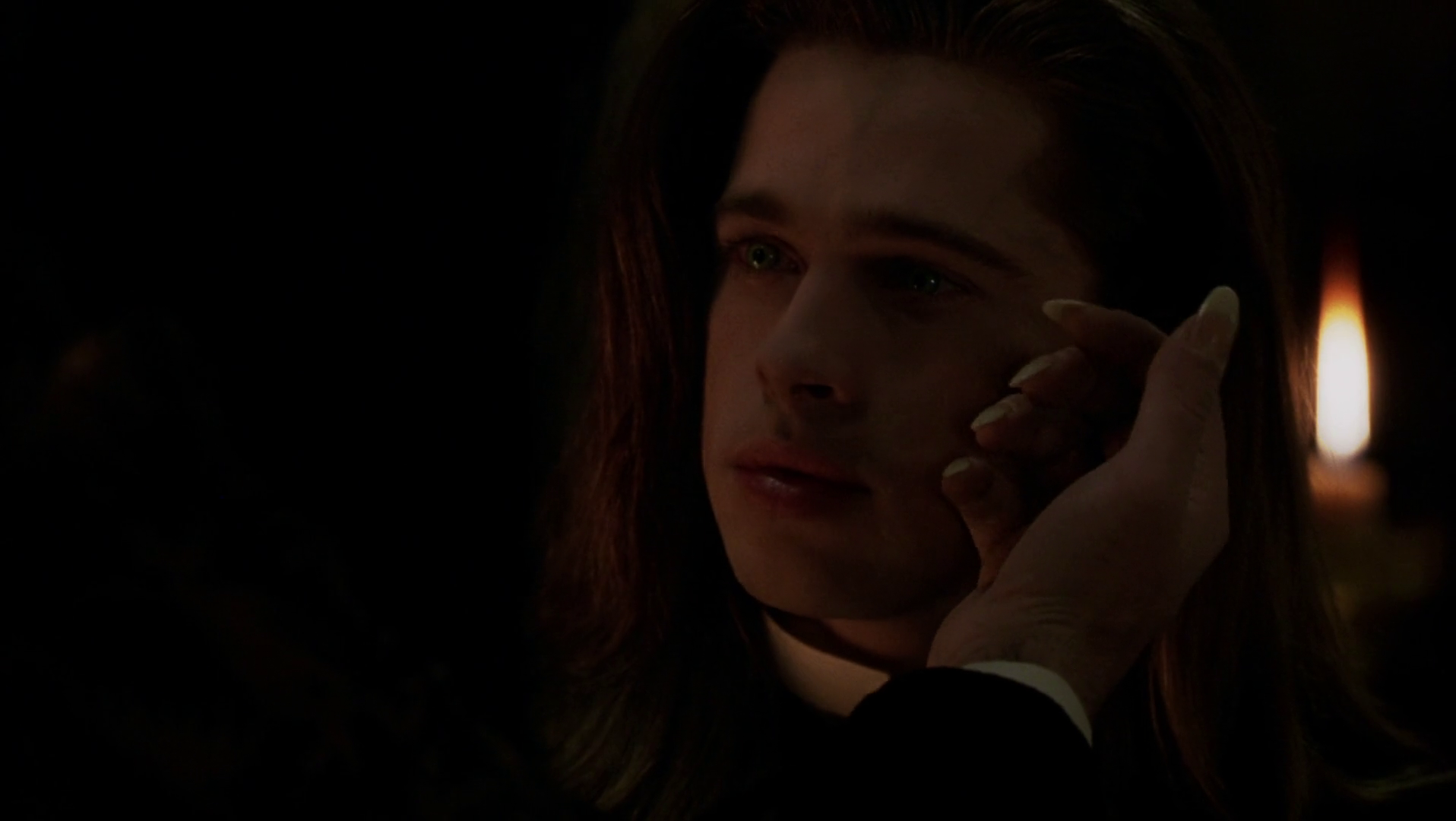
There’s a lot of lore here in the conversation between Armand and Louis in between all the suggestive face and arm stroking, most of it uninteresting outside of being necessary to set up things that will happen shortly on screen — killing another vampire is the worst thing a vampire can do, for instance, and making child vampires is a close second because they don’t have the maturity to handle eternal life (frankly, great call on that one, vampire society) — but Armand does try to woo Louis into joining him a bit. Meanwhile, Claudia has finally found what she thinks will solve her own existential crisis for good: Making a mommy vampire. This is a terrible idea, but she learned from Lestat that the best way to get Louis to do something is to ambush him with it and then wheedle and hector him until he agrees, and so he turns the grieving mother Madeleine, who has recently lost her own daughter, into a vampire — in doing so losing the last of his human soul, in his words. Then the Vampire Theater coterie under Santiago’s command jumps them and drags the three of them away to the catacombs.
Unlike Armand, the rest of the Parisian vampires take the prohibition against vampire murder and making child vampires very seriously, and have decided to do something somewhat hypocritical about it: They lock Madeleine and Claudia up in a jail pit with an exposed roof to kill them by sunlight, and stick Louis in a coffin which they then wall up Cask of Amontillado-style so that he can think about what he’s done. When Armand rescues Louis the following night, it is of course too late for his wife-daughter and his daughter-wife.
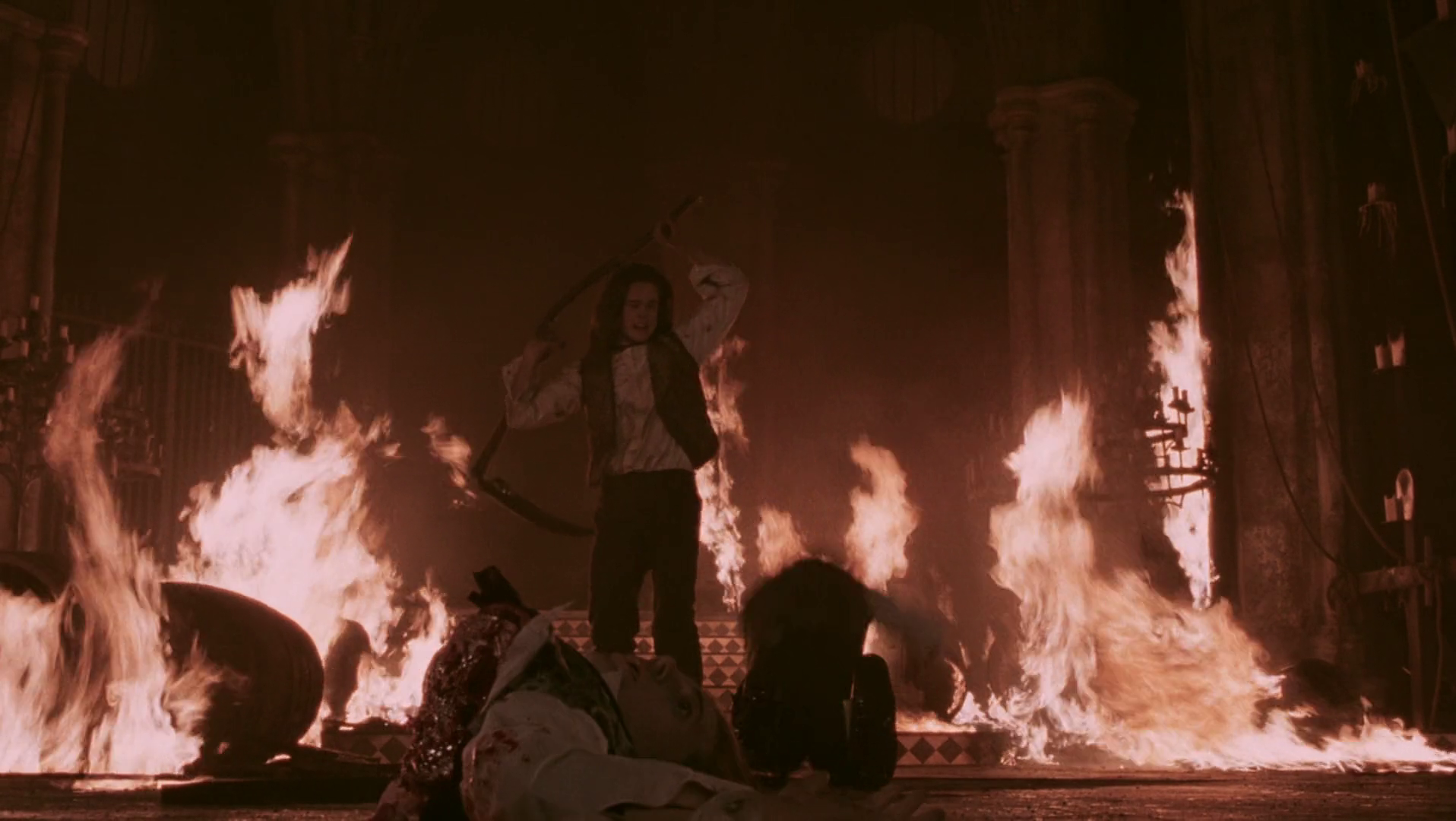
Sometime during the next afternoon, possibly when Louis is burning all the Parisian vampires in their coffins and Armand isn’t among them, or possibly when he’s stumbling out of the collapsing theater having just executed Santiago using a sick charge attack with a scythe and Armand’s carriage is waiting there as a getaway vehicle, Louis realizes that Armand at best let all of this happen and at worst planned it from the night they met. He realizes that once again a vampire is attempting to take advantage of his grief after losing his family in order to bring him into a homosocial (and implicitly homosexual) fellowship of eternal hedonistic murder, as vampires seem wont to do when presented with 1992 Brad Pitt. He rejects Armand and, fully distant and fully cruel, and wanders the earth; he returns in time to New Orleans to find Lestat sniveling in a mausoleum, always a survivor but now a shell of his former self, and then eventually makes his way to San Francisco, where the titular interview takes place after he snatches Malloy (Christian Slater) off the street for looking at him funny. There’s a bizarre sequence in here where Louis spends almost a minute talking about how the invention of motion pictures helped soothe his soul and the creation of Technicolor finally meant he could see the color blue during the daytime again, with a shot of Christopher Reeve Superman cut in to demonstrate with his underwear. This is confusing and wildly tonally inappropriate, but then you realize this “healing power of movies” pap is just there for Academy Award voters to coo at. And hey, they got two nominations out of it.
Pitt as Louis finds himself in an interesting position in this movie; he’s very much the leading man and is almost always on screen, but in every part of it except the interview framing device he’s also taking the backseat to the performances of his supporting cast, from Cruise to Dunst all the way down to Rea, who makes the absolute most of Santiago’s ten or so total minutes in the film. He’s handed both the role of narrator and whiny, sad straight-man that every other vampire in the film gets to bounce off of with a lot more verve and flamboyance. At this point in his career Pitt’s not particularly good at that stuff, and he’s especially weak and limp in the first act where Cruise is running circles around him and stealing the show — though it’s arguably Pitt’s job there to let him do that. By the end of the film, however, he’s much more comfortable with the smoldering anger and resentment that have taken hold of Louis, and you’re left wanting to see more of the vampire Louis is in the last twenty minutes of the film than the versions of him from the previous hour and a half.
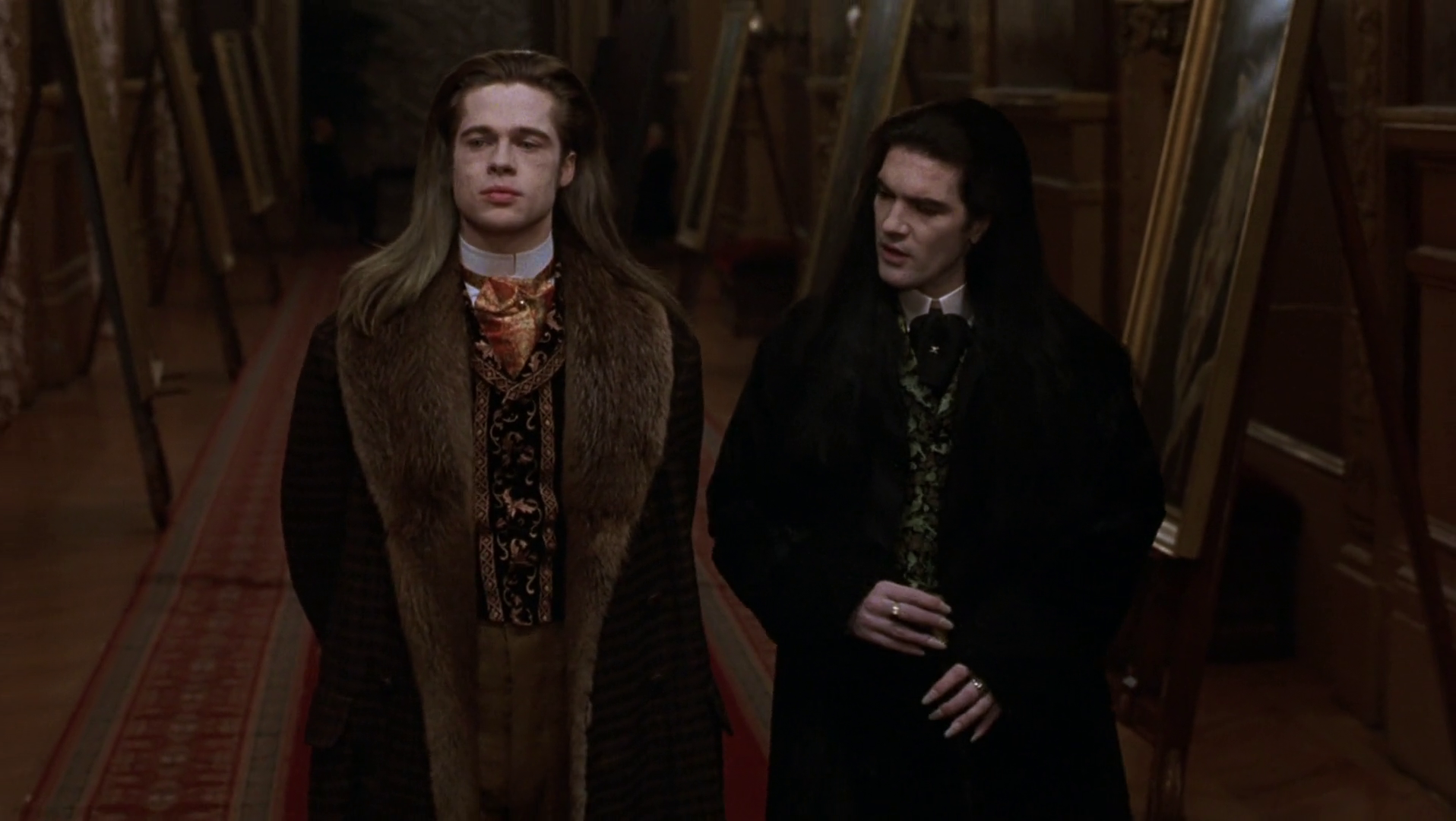
In the end, a stone cold classic. Even with the sequel-hook/final jump scare of Lestat appearing in Malloy’s car as he drives off and playing Sympathy for the Devil on the radio while offering the reporter the same deal he gave Louis. All-timer in a number of directions. You just don’t see dudes get cut in half with scythes that often anymore. Especially not vampire mimes. Next week, another very different classic from the nineties — From Dusk til Dawn.
Have any questions or feedback? Drop us a note in the comments below or email us at contact@goonhammer.com. Want articles like this linked in your inbox every Monday morning? Sign up for our newsletter. And don’t forget that you can support us on Patreon for backer rewards like early video content, Administratum access, an ad-free experience on our website and more.
